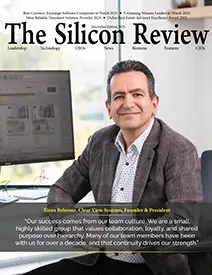>>
Industry>>
EdTech>>
Why Schools Are Turning to Rem...Why Schools Are Turning to Remote Desktop Solutions for Flexible Learning
The Silicon Review
07 May, 2025
As education evolves, institutions are increasingly adopting technology to enhance learning experiences. The growth of remote desktop solutions is a prime example of how schools are embracing innovation to provide flexibility and accessibility for students. This shift comes in response to a demand for learning environments that adapt to various needs, merging convenience with educational efficacy. Remote desktop options empower students to access learning materials from anywhere, offering opportunities beyond traditional classrooms.
Enhanced Accessibility and Convenience
Remote desktop solutions allow students to access educational resources from virtually any location with internet connectivity. Whether they are at home, in a library, or on the go, they can engage with assignments and participate in interactive lessons. This accessibility fosters a sense of independence, allowing students to learn at their own pace and on their own schedule. Many younger learners thrive in environments that traditional classrooms may not adequately cater to, such as those with varying learning styles or special needs.
Transportability becomes even more valuable amid unpredictable life events. Disruptions such as natural disasters or public health crises can halt physical classes, but remote learning ensures continuity. As schools increasingly recognize this asset, many are pivoting towards integrating solutions like AppsAnywhere into their systems. The integration of these tools means enhanced flexibility for students and demonstrates how the educational landscape is shifting toward adaptability.
Cost-Effectiveness for Schools
Implementing remote desktop solutions often results in significant cost savings for educational institutions. Traditional learning environments require substantial investments in infrastructure, maintenance, and physical resources. Utilizing virtual resources diminishes many of these expenditures.
For several institutions, offering software access through remote systems alleviates the need for powerful hardware in classrooms, as students can utilize their devices to run complex applications remotely. Schools can allocate funds toward enhancing course materials and training staff rather than maintaining physical properties. The potential for reduced costs while enhancing flexibility makes remote desktop solutions attractive for students and school administrators looking to stretch budgets and maximize resource efficiency.
Customized Learning Experiences
Remote desktop solutions can significantly boost personalized education. They allow educators to tailor lessons and resources to accommodate individual student needs. By harnessing data gathered through these platforms, teachers can identify learning gaps and preferences, leading to more targeted intervention strategies.
Generally, the immediate feedback offered by these systems helps students understand their strengths and weaknesses more effectively. Teachers can monitor progress in real time and adjust their instructional methods accordingly. This dynamic feedback loop engages learners and encourages them to take ownership of their education. As trends in education move toward individualized instruction, remote desktop solutions will increasingly play a role in shaping how students interact with learning materials.
Collaboration and Communication
Incorporating remote desktop solutions enhances collaboration among students and teachers. These platforms often come with tools designed for interaction and group projects, cultivating a sense of community, even in a virtual environment. As students work together on assignments or engage in discussions, they develop crucial teamwork skills that will benefit them in the workforce.
Real-time communication fosters a culture of open dialogue. Teachers can hold instant feedback sessions or discussions with students, regardless of geography. This interactivity strengthens relationships and allows for more fluid transfer of ideas, which is essential for maintaining a vibrant learning atmosphere.
Preparation for Future Careers
Exposure to remote desktop technology prepares students for future careers in an increasingly digital world. Many industries are now relying on remote work and collaborative technology, making familiarity with these systems essential for students entering the job market.
Educational institutions recognize that integrating innovative tools within curricula provides students with significant advantages as they transition from the classroom to the workplace. As industry expectations evolve, teaching students how to effectively utilize remote desktop solutions ensures they develop the necessary skills to thrive in modern work environments. This preparation is critical for fostering a workforce equipped to meet the challenges of the future.
Maintaining Educational Standards
Despite concerns over quality amid shifts to remote learning, educational institutions are striving to maintain high standards. Remote desktop solutions facilitate access to comprehensive resources and professional development opportunities for educators, which ultimately translates into improved student outcomes.
By providing teachers with better tools and resources, institutions can ensure that they remain effective educators even from a distance. Consistent access to these environments enhances overall educational quality and enables institutions to uphold the standards of education that stakeholders expect. Schools leveraging technology in innovative ways demonstrate a commitment to continual improvement, which resonates positively with students and parents.
![]()
With the shifting landscape of education prompted by remote desktop solutions, schools have the opportunity to create a more flexible and responsive learning environment. By focusing on accessibility, cost-efficiency, and personalized learning experiences, institutions can set the groundwork for an education system that meets modern demands. While challenges do remain, the potential benefits far outweigh the drawbacks in shaping a future-ready educational framework.
_2025-12-15_12-44-58.webp)


_2025-11-17_06-38-14.webp)

 (1)_2025-10-21_13-35-14.webp)
